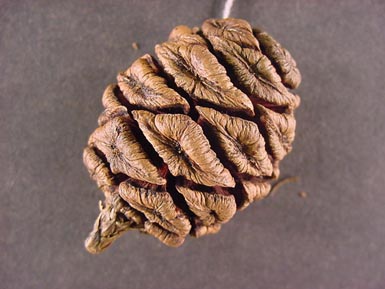Form: This is the largest living organism in the world. It's base may be greater than 30 ft. in diameter and can reach heights between 250 and 300 ft.
Needles:
Arrangement: spirally arranged; appressed or spreading
Length: 1/8 to 1/4 in.
Shape: scale-like; generally lance shaped
Other: n/a
Bark: The bark is very thick, around 1 to 2 ft. on large trees and is deeply furrowed with rounded ridges.
Cones: The cones are oval with wedge shaped scales and are brown in color.

Distinguishing characteristics: This species has naked buds and the cones are similar to redwood. It it the largest living organism in the world. In addition, it is also found between 4,300 and 8,000 ft. in California.
Range: This species occurs on the western slopes of Sierra Nevada Mountains in California and around 4,300 to 8,000 ft. in elevation.
Silvics: This species has an intermediate tolerance, and occurs on alluvial soils, glacial outwashes, and deep, well-drained, sandy loams.
Ecological and cultural importance: This tree is no longer a commercially used or cut species. Small numbers of wildlife use this species for food or cover.